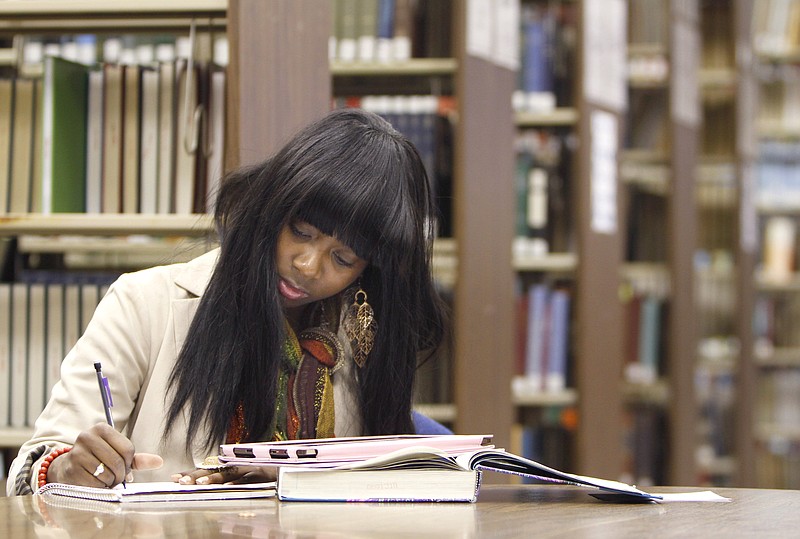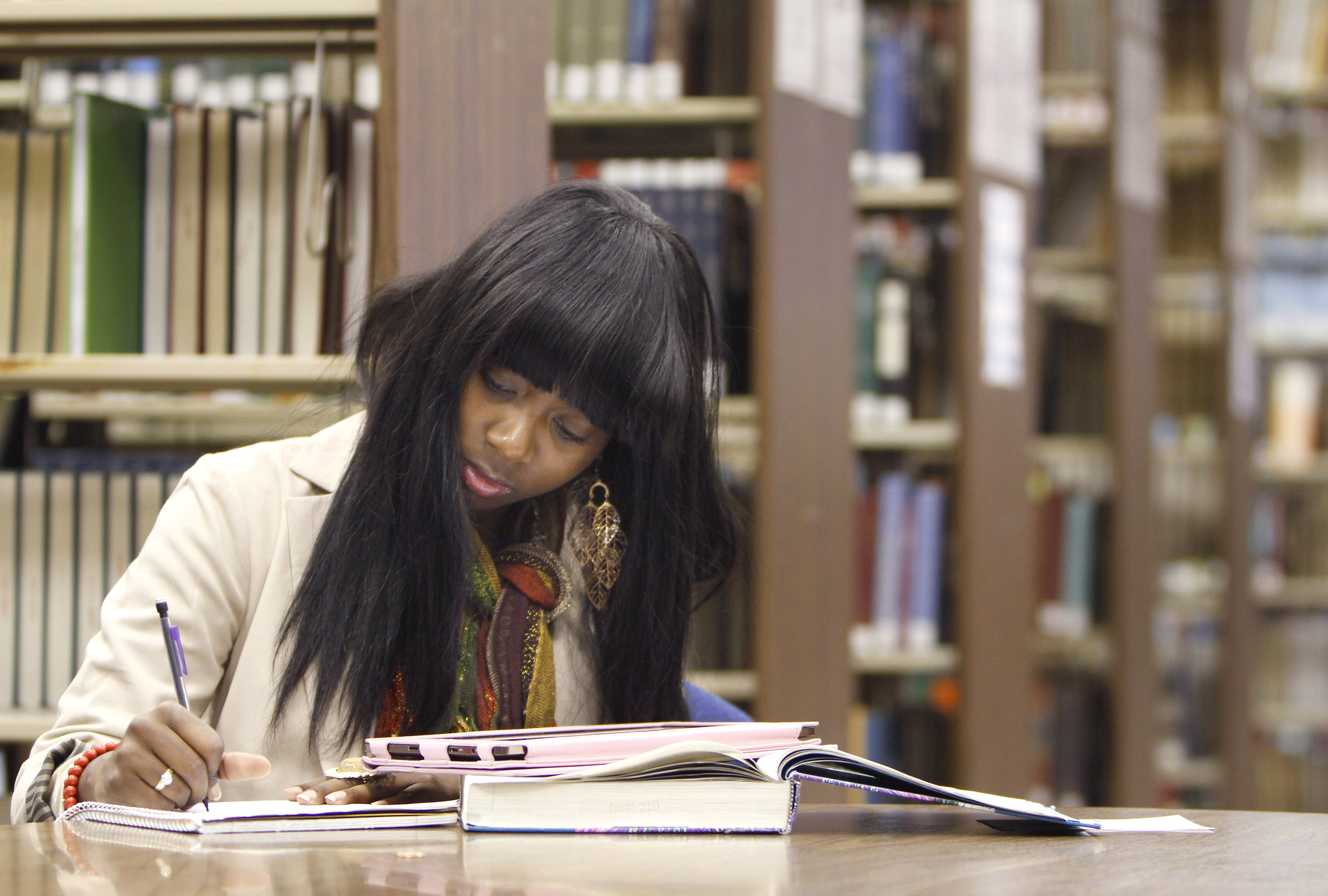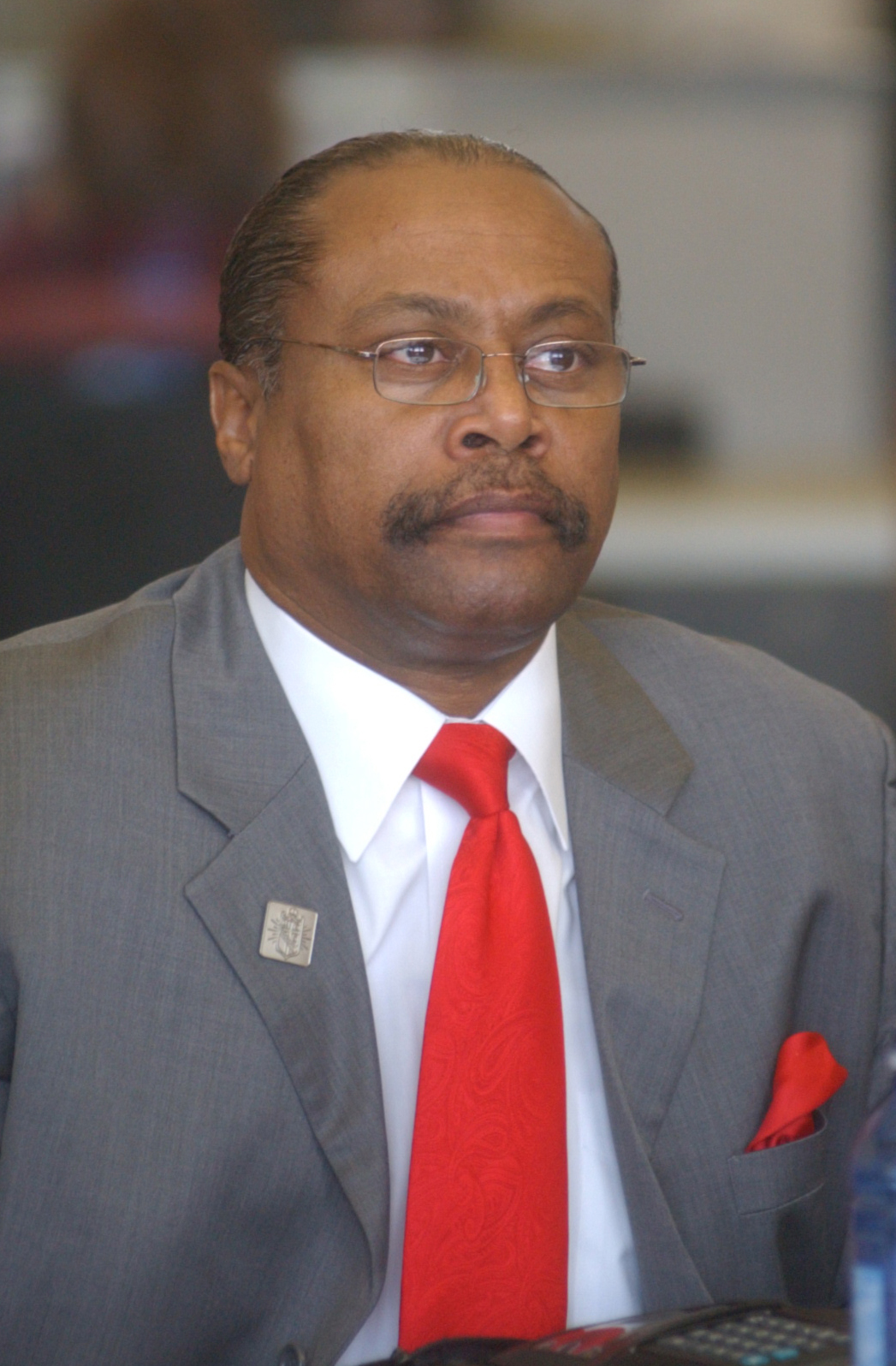TUITION INCREASESPercent rise since 2002UTC: 89 percentChattanooga State: 107 percentCleveland State: 92 percentDalton State: 75 percentGeorgia Northwestern Technical: 100 percent
In 2002, Chattanooga State Community College received nearly two-thirds of its financial support from the state, with student tuition and fees making up most of the remainder.
Ten years later, dwindling state support has turned that equation on its head.
Today, students are paying more than twice as much for tuition and fees, accounting for 62 percent of the college's annual $34 million in revenues.
And Chattanooga State isn't alone. Of the other four public colleges and universities in the Chattanooga area, only one -- Georgia Northwestern Technical College -- still gets more of its money from the state than from students.
Nationwide the story is much the same.
Average state spending per student is at its lowest point in at least 30 years, according to Daniel Hurley, director of state relations and policy analysis for the American Association of State Colleges and Universities.
Meanwhile, tuition and fees at public four-year institutions have increased about 56 percent in the last decade -- beyond the rate of general inflation.
At Chattanooga State, in-state tuition for 12 credit hours increased more than 100 percent, from $1,649 in 2001 to $3,411 in 2011.
President Barack Obama raised the issue in last week's State of the Union address, warning colleges that they could lose government funding if they continue to raise tuition.
"Higher education can't be a luxury -- it's an economic imperative that every family in America should be able to afford," he said.
Obama also said states need to do their part by making higher education a higher priority in their budgets.
"It's not enough for us to increase student aid. We can't just keep subsidizing skyrocketing tuition; we'll run out of money," he said.
Yet state and college officials say there's probably no going back.
"I think it's a reality, and I don't think it's going to change," said Craig McDaniel, president of Georgia Northwestern Technical College. "They [schools and government] are going to have to focus not only on the missions of those institutions, but what they are getting for those state dollars," such as the number of students who graduate and find a job.
Georgia state Sen. Charlie Bethel, R-Dalton, said higher education is one of the top priorities for the state and has been for a long time.
Even though revenues are shifting to a greater emphasis on tuition and fees, Bethel said, students who perform well have access to a low-cost higher education degree in Georgia, subsidized by state and federal dollars in the form of grants and scholarships.
Decade-long trend
The shift from a primarily state-financed public higher education system to one in which students and their parents bear more of the burden has been under way for at least a decade, but the trend accelerated during the Great Recession that began in 2007, according to Hurley.
The national average today puts the split at about 50 percent from the states and 50 percent from tuition and fees, he said.
"I think the era of students and families being the major stockholder, if you will, as opposed to general taxpayer money, it's alive, and I don't see it going back in a very long time, if ever," Hurley said.
At the University of Tennessee at Chattanooga, the source of revenues has shifted progressively to tuition and fees.
In 2002, 54 percent came from state appropriations while 40 percent came from tuition and fees. Now, 31 percent comes from state appropriations and 64 percent from tuition and fees.
Meanwhile in-state tuition and fees have increased 89 percent in the last decade, from about $3,000 to close to $7,000 for 12 credit hours.
Richard Brown, vice chancellor of finance and operations at UTC, believes changes will be necessary.
Colleges and universities are going to have to find alternative sources of revenue, Brown said. Schools will continue to rely on state appropriations, "but they must also benchmark tuition and fees to make sure we are charging a reasonable tuition and fee model," he said.
Schools also need to look into private philanthropy, especially for scholarships, he said.
At Dalton State College, the shift from state money to student dollars happened this past fiscal year, said Scott Bailey, vice president for fiscal affairs at the school. Besides the increased cost for students, it makes the college more vulnerable to enrollment changes, he said.
"With most revenue being directly related to tuition, when you have a decrease in enrollment, it really affects your operation a whole lot more because it is a more variable part of your budget," he said.
With the changes, some fear college will become unaffordable, especially to the middle-income group.
Jasmine Gray, 19, a sophomore studying psychology at UTC, moved from Jackson, Tenn., and lives on campus, which adds room and board to her tuition and fees expense. Last year, she had to take out a $2,000 loan, despite getting grants and scholarships, she said.
"[The increases] are really starting to affect me right now," she said. "I don't like the concept of having to pay loans, but I feel I will have to get more loans if it keeps rising or work to pay my way."
Nationwide, student loan debt exceeds credit card debt.
Shared burden?
Tennessee state Sen. Andy Berke, D-Chattanooga, said the state needs to find ways to keep all the financial burden from being on students and their families.
"For generations, higher education has been the way that families made sure that the next generation had a better future," he said, but the reality is that costs keep going up and state resources are limited.
"It's unlikely we will go back to the old model," he said.
State appropriations nationwide for colleges and students decreased by 8 percent in 2011-12, the largest such decline in at least a half century, according to the annual Grapevine study, conducted by the Illinois State University Center for the Study of Higher Education and the State Higher Education Executive Officers.
In Georgia and Tennessee, that support decreased by 12 percent and 15 percent, respectively, from 2010-11 to 2011-12.
There are places where the role of government funding is so low that colleges and universities are considering going private, said Jim Catanzaro, president of Chattanooga State.
"One of the things happening in our state, since [the] majority of funding comes from tuition and fees ... state policies and policy direction will not be as influential as they otherwise would be because we have to pay attention to what our primary source of revenue tells us to do," he said.


